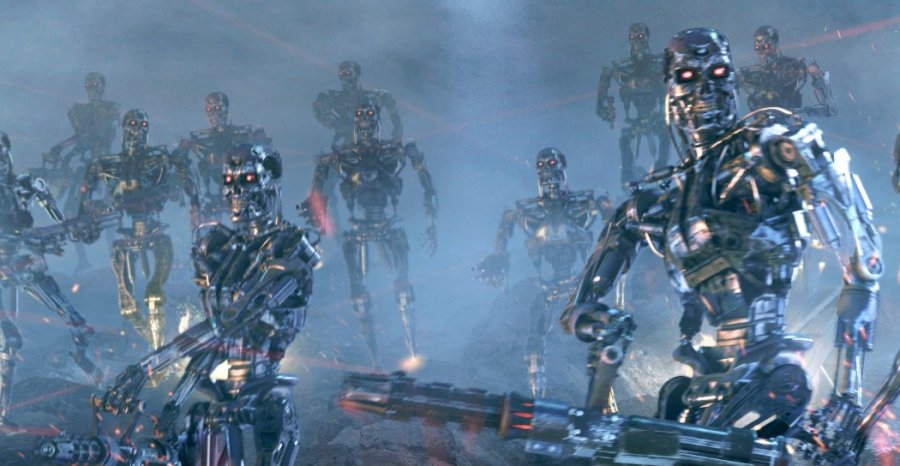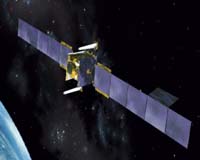
Pentagon Envisioning a Costly Internet for War
By TIM WEINER
Published: November 13, 2004
The Pentagon is building its own Internet, the military's world wide web for the wars of the future.
The goal is to give all American commanders and troops a moving picture of all foreign enemies and threats - "a God's-eye view" of battle.
This "Internet in the sky," Peter Teets, under secretary of the Air Force, told Congress, would allow "marines in a Humvee, in a faraway land, in the middle of a rainstorm, to open up their laptops, request imagery" from a spy satellite, and "get it downloaded within seconds."
The Pentagon calls the secure network the Global Information Grid, or GIG. Conceived six years ago, its first connections were laid six weeks ago. It may take two decades and hundreds of billions of dollars to build the new war net and its components.
Skeptics say the costs are staggering and the technological hurdles huge.
Vint Cerf, one of the fathers of the Internet and a Pentagon consultant on the war net, said he wondered if the military's dream was realistic. "I want to make sure what we realize is vision and not hallucination," Mr. Cerf said.
"This is sort of like Star Wars, where the policy was, 'Let's go out and build this system,' and technology lagged far behind,'' he said. "There's nothing wrong with having ambitious goals. You just need to temper them with physics and reality."
Advocates say networked computers will be the most powerful weapon in the American arsenal. Fusing weapons, secret intelligence and soldiers in a globe-girdling network - what they call net-centric warfare - will, they say, change the military in the way the Internet has changed business and culture.
"Possibly the single most transforming thing in our force,'' Defense Secretary Donald H. Rumsfeld has said, "will not be a weapons system, but a set of interconnections."
The American military, built to fight nations and armies, now faces stateless enemies without jets, tanks, ships or central headquarters. Sending secret intelligence and stratagems instantly to soldiers in battle would, in theory, make the military a faster, fiercer force against a faceless foe.
Robert J. Stevens, chief executive of the Lockheed Martin Corporation, the nation's biggest military contractor, said he envisioned a "highly secure Internet in which military and intelligence activities are fused," shaping 21st-century warfare in the way that nuclear weapons shaped the cold war.
Every member of the military would have "a picture of the battle space, a God's-eye view," he said. "And that's real power."
Pentagon traditionalists, however, ask if net-centric warfare is nothing more than an expensive fad. They point to the street fighting in Falluja and Baghdad, saying firepower and armor still mean more than fiber optic cables and wireless connections.
But the biggest challenge in building a war net may be the military bureaucracy. For decades, the Army, Navy, Air Force and Marines have built their own weapons and traditions. A network, advocates say, would cut through those old ways.
The ideals of this new warfare are driving many of the Pentagon's spending plans for the next 10 to 15 years. Some costs are secret, but billions have already been spent.
Providing the connections to run the war net will cost at least $24 billion over the next five years - more than the cost, in today's dollars, of the Manhattan Project to build the atomic bomb. Beyond that, encrypting data will be a $5 billion project.
Hundreds of thousands of new radios are likely to cost $25 billion. Satellite systems for intelligence, surveillance, reconnaissance and communications will be tens of billions more. The Army's program for a war net alone has a $120 billion price tag.
Over all, Pentagon documents suggest, $200 billion or more may go for the war net's hardware and software in the next decade or so. "The question is one of cost and technology," said John Hamre, a former deputy secretary of defense, now president of the Center for Strategic and International Studies in Washington.
"We want to know all things at all times everywhere in the world? Fine," Mr. Hamre said. "Do we know what this staring, all-seeing eye is that we're going to put in space is? Hell, no."...
Last edited:






